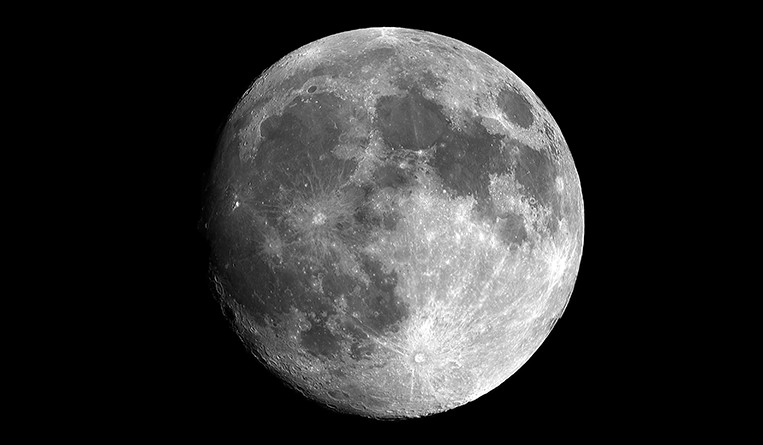Indian satellite lands on moon; brands capitalize on its success
11 September 2023


Nihit Nagpal, Associate Partner, S.S. Rana and Co., New Delhi
With its Chandrayaan-3 lander, India became the first nation to set foot near the moon’s south pole region on August 23, 2023, following the last moon landing by China in 2020. India is also one of many nations, including the United States with its Artemis program, attempting to set foot on the moon.
“The story of the successful landing of the LVM III, popularly known as Chandrayaan-3, marks a watershed event in the history of Indian space tales,” said Nihit Nagpal, associate partner at S.S. Rana and Co. in New Delhi. “Its impact is not limited only to the traditional IP rights, such as patent, trademark and copyright, but also the commercialization that would be encouraged post-success of the Chandrayaan-3. The object of IP rights is the acknowledgment and protection of due intangible rights of the creators. Being viewed by an audience of over a billion people, more awareness regarding IP rights associated with Chandrayaan-3 mission and potential infringements is very pertinent.”
The Chandrayaan-3 mission comprised of the Vikram lander and Pragyan rover, which aimed to achieve a soft landing on the lunar south, explore the spatial lunar surface and collect invaluable scientific data from the lunar south. After the mission, India became the fourth country after China, the U.S. and the Soviet Union to achieve this milestone with only an expense of 650 crore (USD$78.18 million), said Nagpal.
He added: “The event was met with educational institutions and places of work celebrating the landmark event. This has brought the contentious prospect of commercialization and IP rights in the interstellar region to wider attention. The frugal expense coupled with India’s positive year-on-year growth in the space industry has made this story more relevant in IP world today, considering Indian Space Agency has signed multiple memorandums of understanding with various governments, such as Afghanistan, Australia, Egypt, UAE, Venezuela and Thailand, among others.”
According to Nagpal, the success of Chandrayaan-3 mission will further commercialize the space industry; hence, it is pertinent that Indian indigenous efforts are recognized and protected against attempts of ambush marketing. This refers to a marketing strategy where a brand or company associates itself with an event or occasion without being an official sponsor. It often involves leveraging the popularity of an event to gain brand recognition and visibility.

Vikrant Rana, Managing Partner, S.S. Rana and Co., New Delhi
“With the stellar advances in aerospace sector, the issue of ambush marketing is also becoming a reality in this new sector,” said Vikrant Rana, managing partner at S.S. Rana and Co. in New Delhi. “With the recent successful landing of the Chandrayaan-3 lunar mission by the Indian Space Research Organization (ISRO), there is again a rise in the instances of ambush marketing whereby many brands are showcasing their goods and services along with the model of Chandrayaan-3, attempting to reach a larger set of audience through their social media campaigns.”
“Chandrayaan Incense Sticks,” “Chadrayaan Pesticides/Germicides” and “Chandrayaan Rice” are among the names used by various entities in the market piggybacking on the wave of the mission’s success.
But even with such great exploration and technological developments, why is there no IP rights in space economy until now?
Rana said that despite space economy reaching behemoth proportions, the legislative framework relating to IP rights is “weak” both at international and domestic level.
“One important reason was that earlier the space sector was protected by the state, and private commercial players did not have sufficient involvement,” he explained. “However, with the rise in globalization and opening up of economies, there has been a greater role of the commercial players. Hence, the need to develop legislative framework around the space industry and IP rights.”
Rana also noted that there is IP rights recognized in the space sector, but the focus is limited to specific IP rights, such as patents, since majority of the developments in this field are regarded as inventions.
“In addition, development of space exploration began globally in the era of Cold War and Space was solely operated by the state entities, reducing the participation of private players,” he said. “The factor of commercialization of space is a relatively newer phenomenon hence IP Rights have not received their due attention.”
He added: “For instance, the ISRO is proactively registering various trademarks, copyrights and patents for protection against unauthorized usage. As on April 29, 2022, the ISRO has filed over 370 patents across various technology, such as electronics, mechanics, optics, chemicals, etc. The ISRO also boasts 73 copyrights and 13 trademarks registered with the competent authorities. At the legislative level, India has formulated its vision statement, the Indian Space Policy 2023. This envisions greater participation with private entities; hence, IP rights are expected to gain momentum in Indian space economy.”
- Excel V. Dyquiangco






